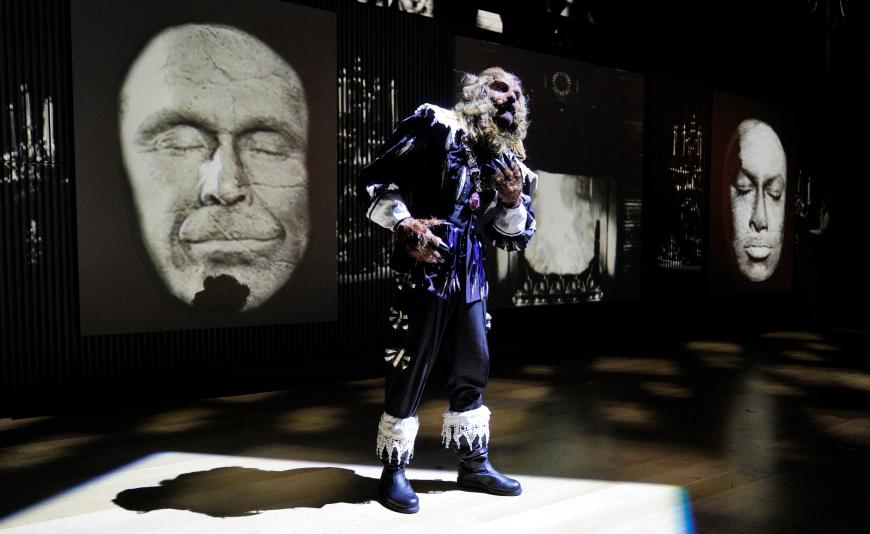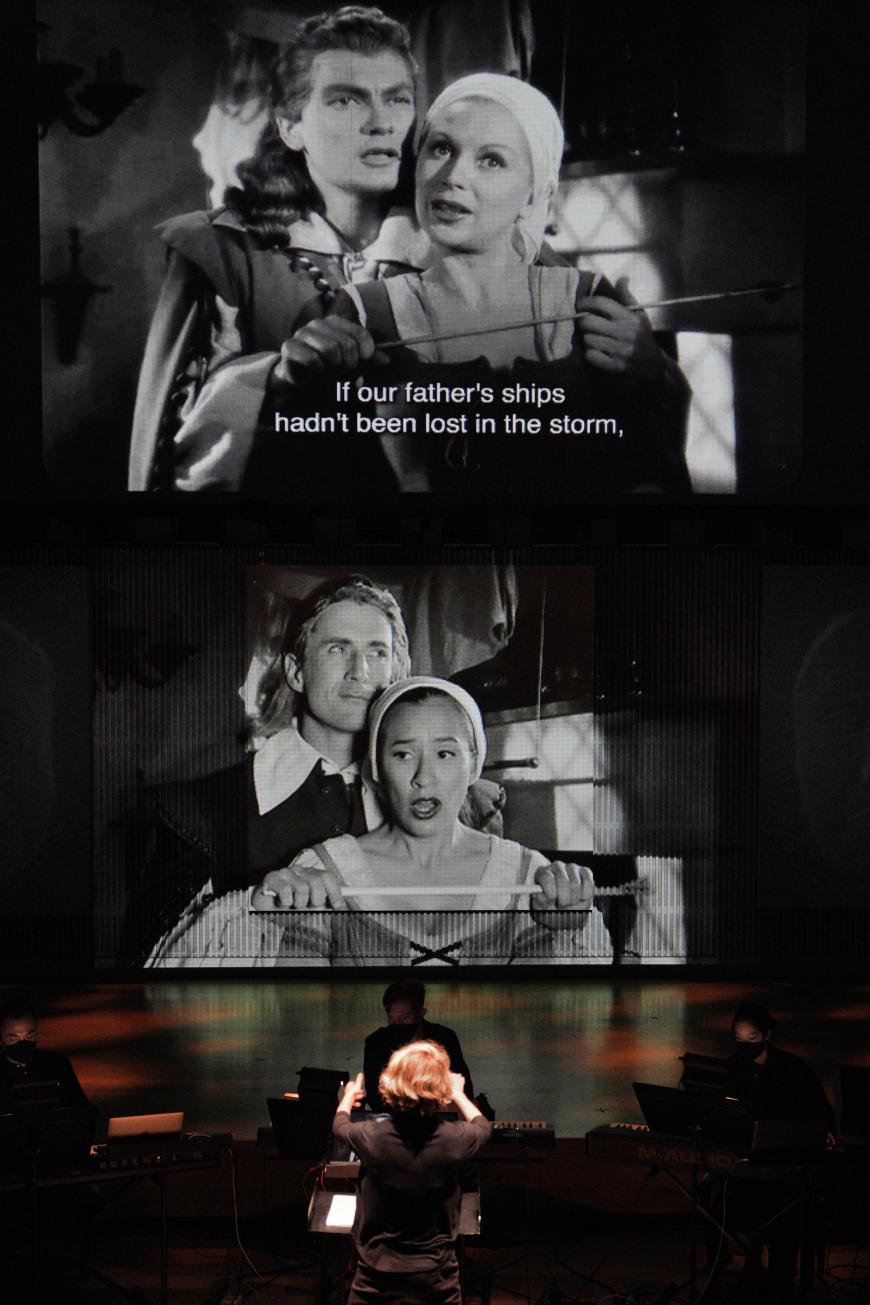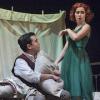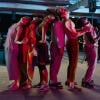
Film-to-opera adaptations, or book-to-film-to-opera adaptations, have become common over the last 20 years or so. Kevin Puts and Mark Campbell’s Silent Night originated with the film Joyeux Noël, and the composer’s forthcoming The Hours comes from the film and novel of the same name (and Virginia Woolf’s Mrs. Dalloway). Paul Moravec and Terry Teachout’s The Letter is based on a W. Somerset Maugham play and on William Wyler’s film of the same name.
But Philip Glass got there first. Between 1993 and 1996, Glass created three operas based on films of the French auteur Jean Cocteau. Opera Parallèle has made a project of staging the trio, starting with Orphée in 2011 and continuing in 2017 with Les Enfants Terribles.
This year, at the request of Glass himself, it’s the great fairy tale La Belle et la Bête (Beauty and the Beast). Cocteau’s black-and-white film features memorable performances from Josette Day as Beauty and Jean Marais as the Beast, as well as magical special effects. Human arms extend and retract wall sconces, candles are lit with no human intervention, stone statues have living eyes, a pearl necklace held by the wrong person turns to a rope of hair, tears become diamonds.

It’s human conflict at the heart of the story, though, with elements of “Cinderella” in the form of Beauty’s two awful sisters, who treat her like a servant, and of King Lear in that it’s Beauty who truly loves their father. And, as in the Bluebeard myth, you can’t help wondering what might be hidden behind a door in the Beast’s chateau.
Glass took an unusual approach to this opera: He stripped all audio from the movie and treated it like a silent film, setting the words of the screenplay to music and replacing Georges Auric’s beautiful original score with his own. The opera is typically performed with the singers and instrumentalists visible but essentially accompanying the projected film, without costumes or stage action.
In a great theatrical coup, Opera Parallèle has expanded Glass’s adaptation beyond what the composer specifies. Brian Staufenbiel’s production design incorporates both live and newly filmed sequences (by photography director David Murakami), all almost exactly paralleling the scenes in the Cocteau. The singers are made up and costumed just as Cocteau’s characters are, with costumes by Natalie Barshow, wigs and makeup by Y. Sharon Peng, and hair by Marisela Garcia.
Still images from the film, or inspired by it, are sometimes projected on the walls around Miner Auditorium at the SFJAZZ Center, expanding the visuals to nearly three dimensions. The production envelops the audience, and given Glass’s musical style, the entire effect is mesmerizing, and unpredictable in the best possible way.
You never know when furniture and a living Beast will appear onstage, offset from the still-playing film, or whether the characters will break the fourth wall, leaving the stage to climb stairs into the audience, or whether you’ll suddenly find yourself inside the ruined gardens surrounding the chateau. The whole production has an unearthly beauty all its own, matching that of the original film.

For these performances, Opera Parallèle made some musical adaptations as well. The opera’s nine roles are performed by four singers, and Glass’s already small orchestra is reduced to just seven instrumentalists, who play keyboards, percussion, alto and soprano saxophone, flute, and piccolo. The many repetitions, overlapping rhythms, and the required beat counting all conspire to make Glass’s music hard on the performers. All, starting with conductor Nicole Paiement, turned in superlative performances. Beyond the conductor’s usual responsibilities, Paiement had the task of keeping the performance coordinated with the film, which meant that her music stand included a monitor with the film playing as well as the printed score.
Because the sung text matches the spoken text in the film, the singers need to get the words out faster than just about any other sung text that I can think of. There are barely melodies — Glass’s speechlike text setting is close to that of Janáček — and no opportunities for purely vocal display. The singers met these challenges fabulously, conveying the emotional content of the music and film securely and with complete aplomb.
Dramatically, they were preternaturally accurate in matching the physicality and style of each of the actors. Hadleigh Adams is nearly as handsome as Jean Marais, and his beautifully resonant, dark baritone suited the Beast, the Prince, and family friend Avenant well. Vanessa Becerra’s combination of a delicate soprano and bold manner made her an ideal Beauty. Mezzo-soprano Sophie Delphis more than ably took on both squabbling sisters. Eugene Brancoveanu managed to distinguish among the music for the father, brother Ludovic, and the moneylender and played the father with the greatest sympathy.




